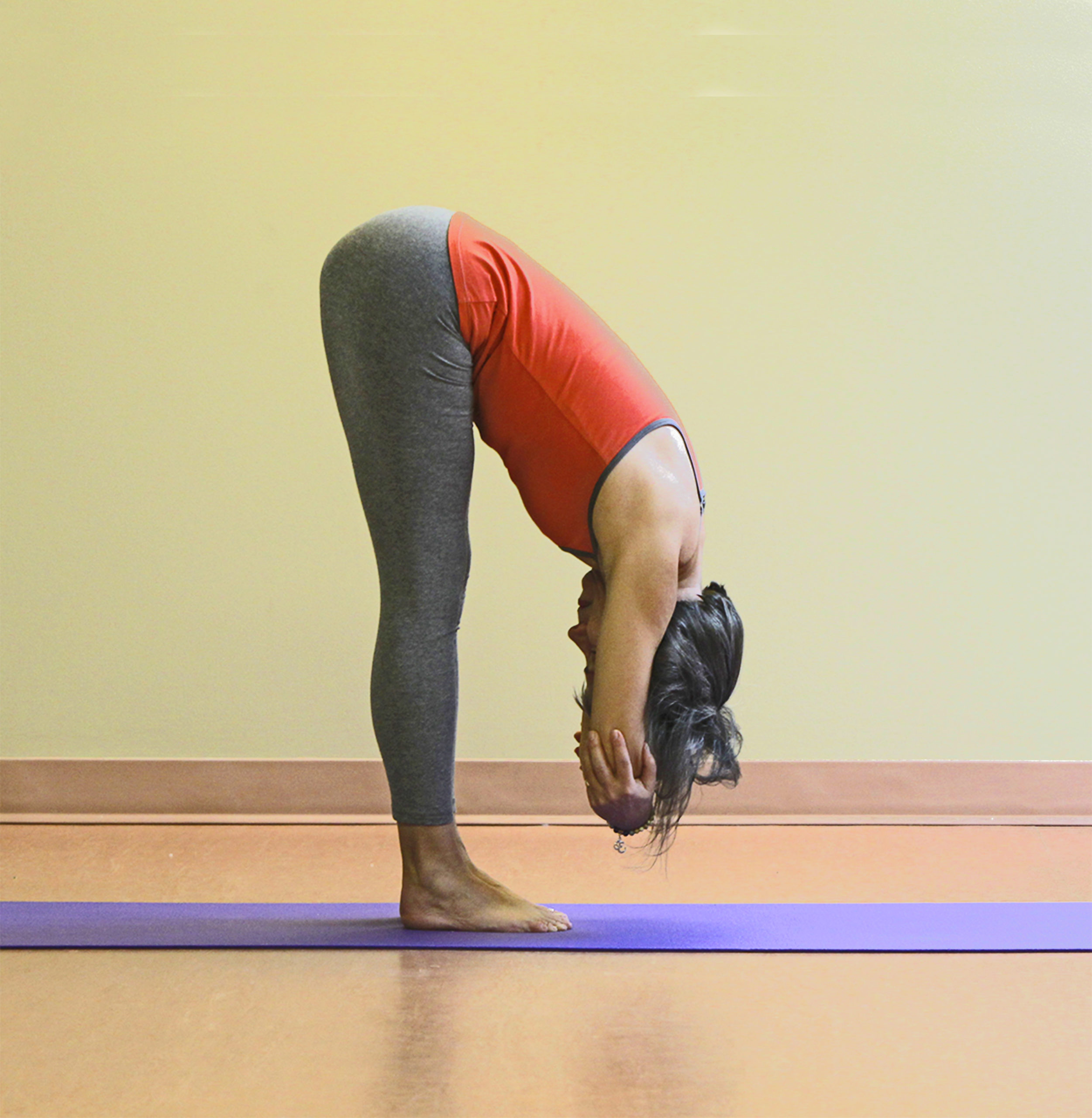I just came home from an intriguing breakfast conversation with two dear friends, David and Deri. Our back-and-forth dialogue circled around the uncertain adventure COVID is presenting within our global community. Fortunately, in any time of personal and collective crisis, life offers us the opportunity to listen, learn and adapt to what is. In yoga vernacular, learning from the present moment and then adapting to its circumstances is what we call balancing our gunas.
[…] awareness of the gunas tells us whether we are genuinely moving forward in life (sattva), running in place (rajas), or losing our way (tamas). Rolf Solvik
The gunas represent the three forces (sattva, rajas and tamas) that make up our universe and, thus, drive our fundamental human nature. Getting to know these forces (contentment, agitation and lethargy; respectively) is key to understanding our mind, that is, our mental-emotional experience. And, since we store unresolved emotion in our bodies, releasing such tension through understanding and appropriate action also enlightens our physical being and outer world.
The good news—all three gunas exist within each of us. The challenge is to be able to choose, from moment to moment, our best course of action. Life’s events present us with choices, and how we interpret these events can demonstrate a conditioned tendency or habitual preference toward one guna over another. Staying awake and aware to each of life’s events, which amounts to being mindful in one’s choice of response—contentment, agitation or lethargy—is one definition of discernment. You might think of it in terms of what energy you are expressing.
Sattvic energy (lightness, clarity) elevates awareness and fosters unselfish joy. This is not enlightenment but rather the unveiling of what is true and real for oneself. Look in yourself for feelings of beauty, balance, inspiration and contentment.
Rajasic energy (motion, friction) brings change through passion, desire, effort and pain, which may include positive or negative actions. Thus, rajas can move us closer to spiritual understanding (sattva) or to ignorance (tamas). On the imbalanced side of rajas, look for feelings of unsteadiness, agitation, unhappiness, change for the sake of change, and attachment to sensory pleasures.
Tamasic energy (dullness, ambivalence) is heavy and dense having the power to obscure consciousness (awareness). Because of tamas’s steadying influence, it can lead to healing as in the case of bed rest, but for the most part, it immobilizes. During imbalanced states, look for feelings of lethargy, impurity, mindlessness, intoxication and inaction.
Thus, whatever life presents us, which can amount to extremes as the crisis of COVID and the inertia of depression—adapting in the moment necessitates balancing these two opposing forces. How do we accomplish such a fine state of refinement … by setting the conditions for contentment and joy (sattvic energy) through balancing our rajasic energy (desire, striving, ambition, effort) with our tamasic energy (dullness, obsession, inaction). This process of refining our capacity to be aware of both our present moment inner and outer experiences and then following up with the right thoughts, words and actions moves us forward in life (sattva).
The following sequence of yoga poses and yoga actions utilizes your inner awareness to first find internal energy imbalances and then to begin the practice of creating what you need to correct those imbalances.
ACTIONS: Today, in each pose, witness the guna(s) you actively express.
That is, in this pose …
- Are you relaxed, mindful, content (sattvic)?
Are you forceful, competitive, struggling painfully, agitated (rajasic)?
Are you lethargic, mindless (numb), intoxicated, obsessed (tamasic)? - How can you mindfully, gently cultivate chaos and agitation into a joyful/contented creative expression?
– i.e., Practice a relevant yoga action? Backoff to a first-level sensation? Breathe into sensation? Hold awareness on sensation? Tell your brain to soften around sensation? Smile? Chant a positive mantra? - How can you mindfully, gently cultivate lethargy and obsession into a joyful/contented creative expression?
– i.e., Move closer to your edge? Move energy through your body? Single-pointedly focus on the breath/a mantra/sensations?
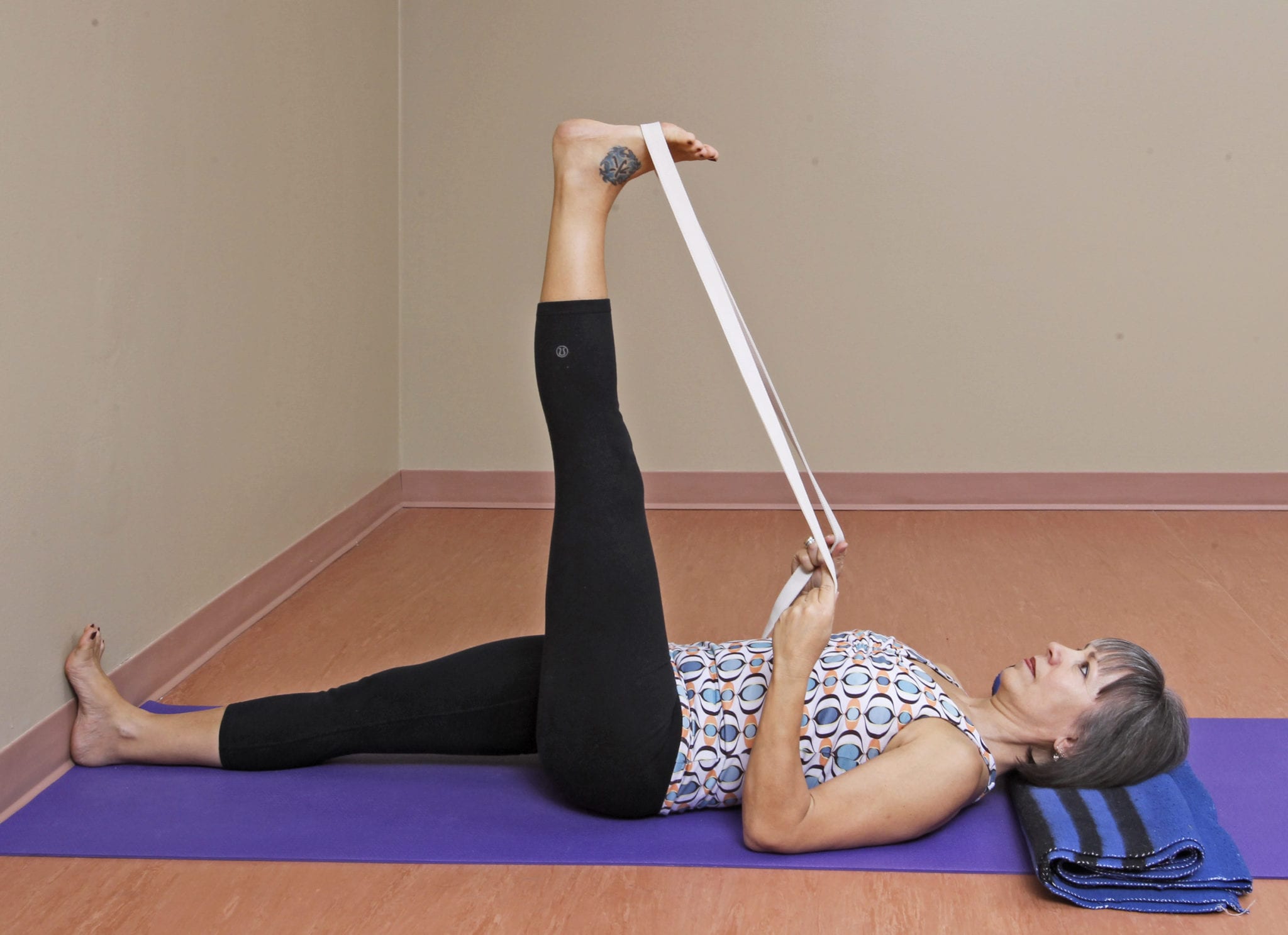
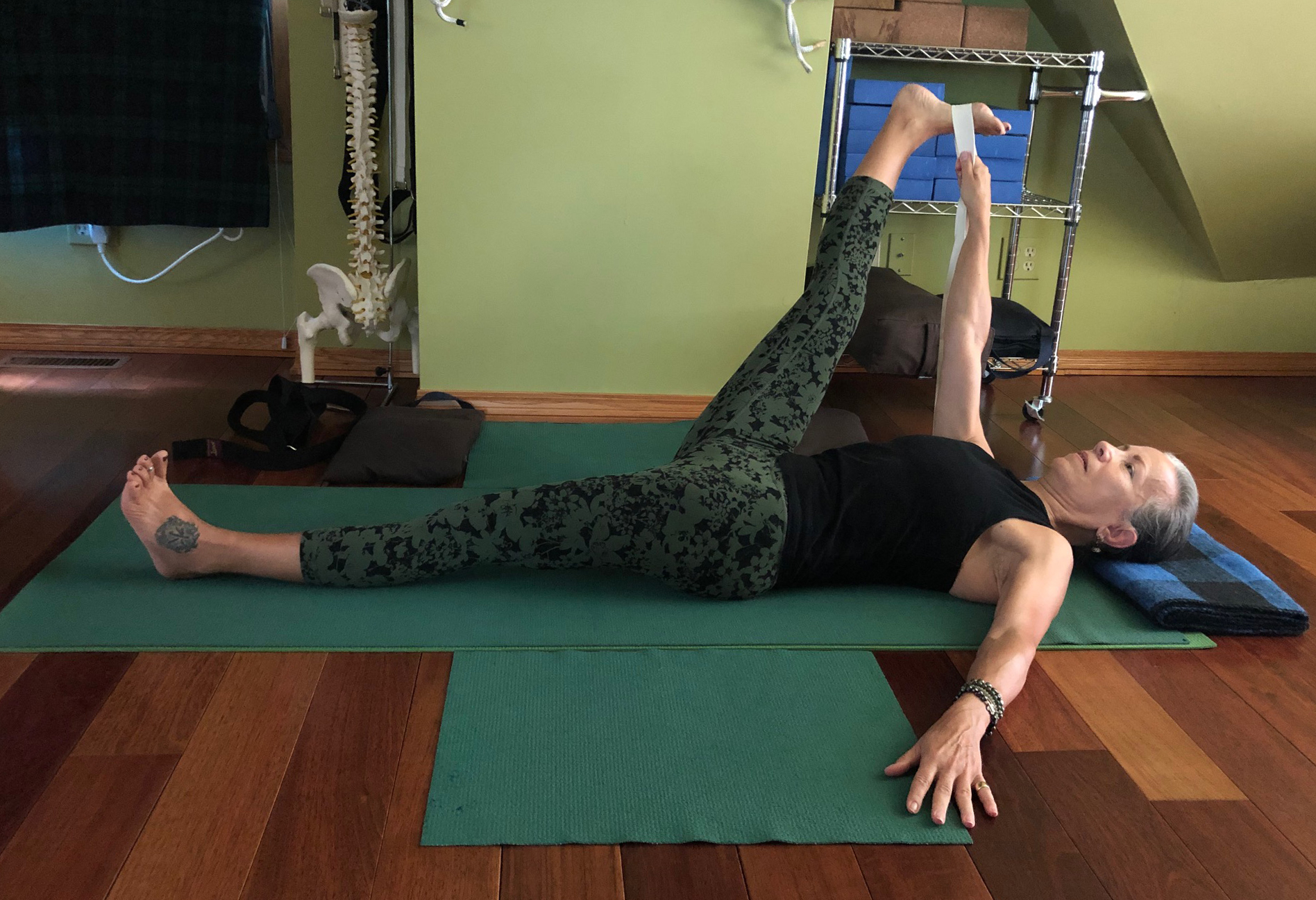
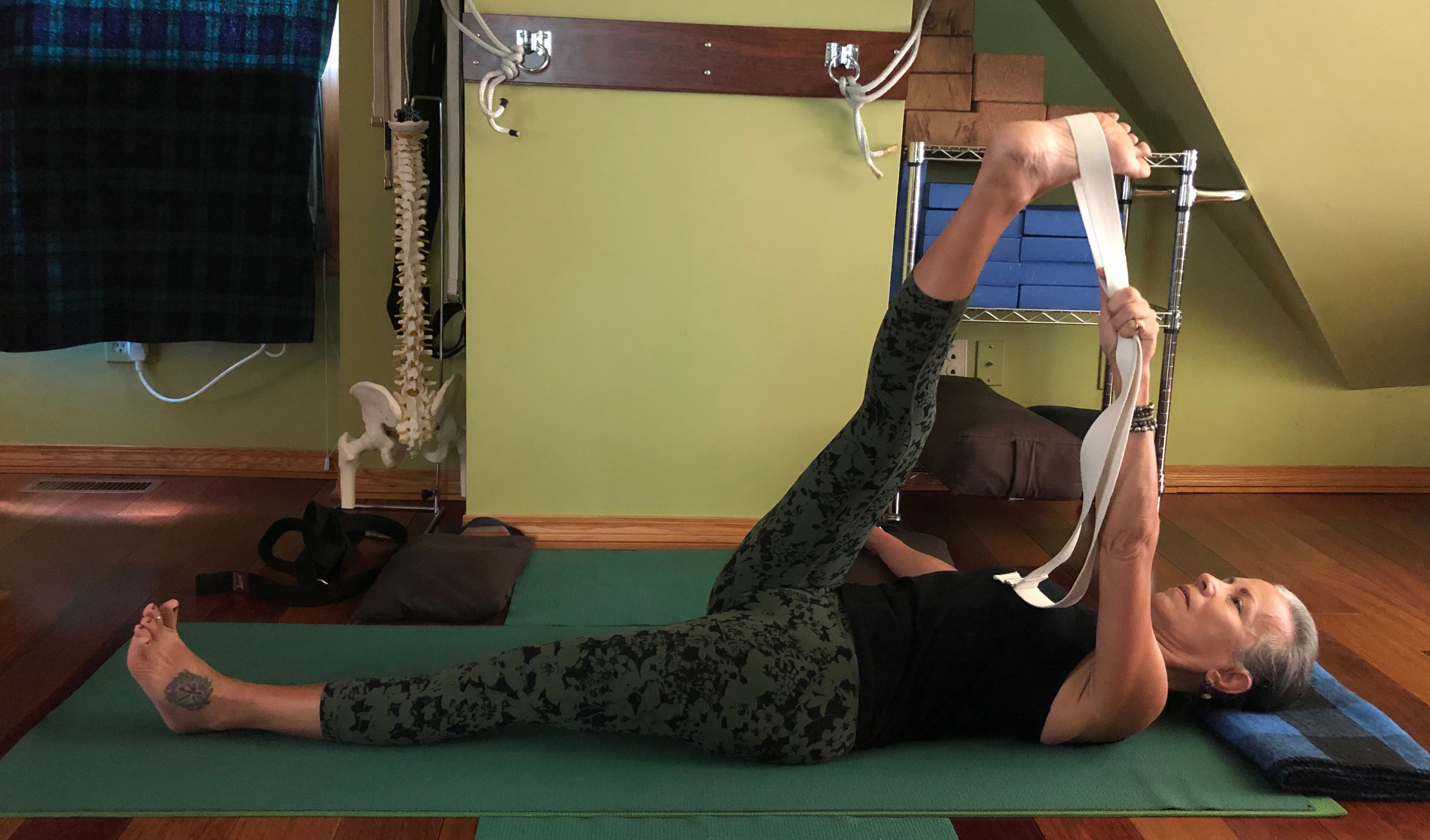
SUPTA PADANGUSTHASANA I, II, III 10 Breaths/1 minute each side
1) one thigh at 90 degrees vertical
2) external rotation of each thigh
3) internal rotation of each thigh
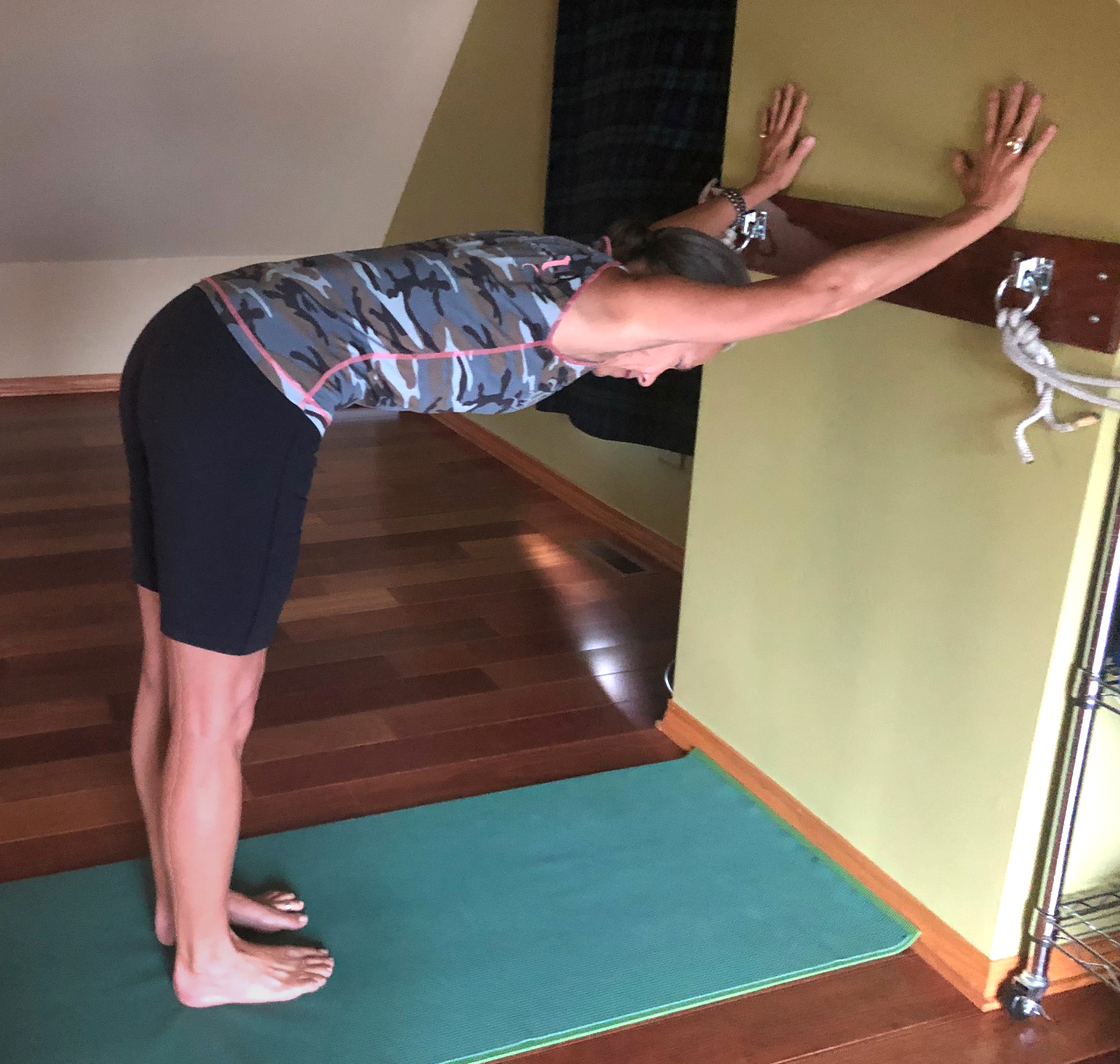
WALL STRETCH hands chest high 1 minute
to
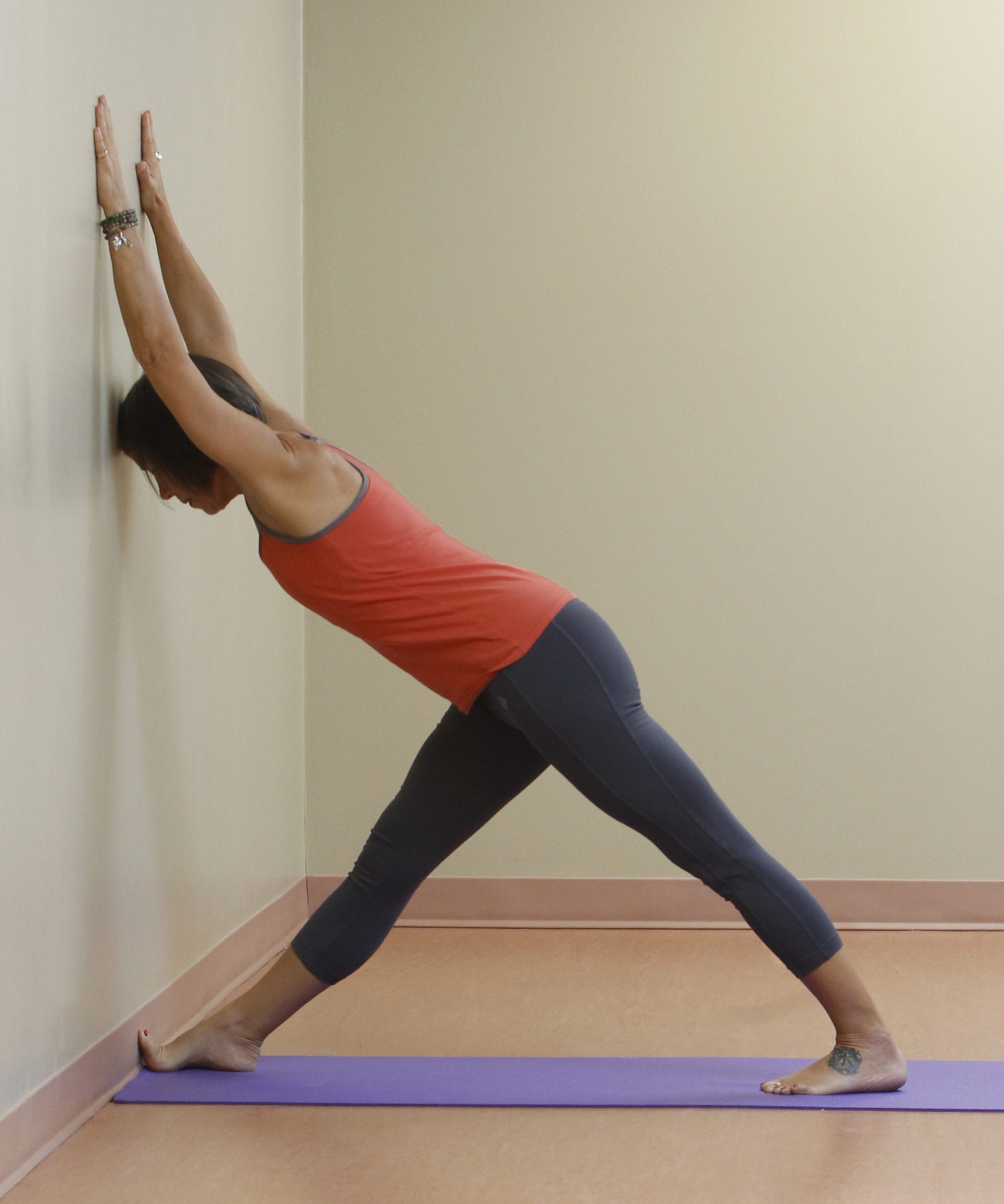
WALL PARSVOTTANASANA arms up wall 1 minute each side

UTTANASANA elbows clasped 2 minutes
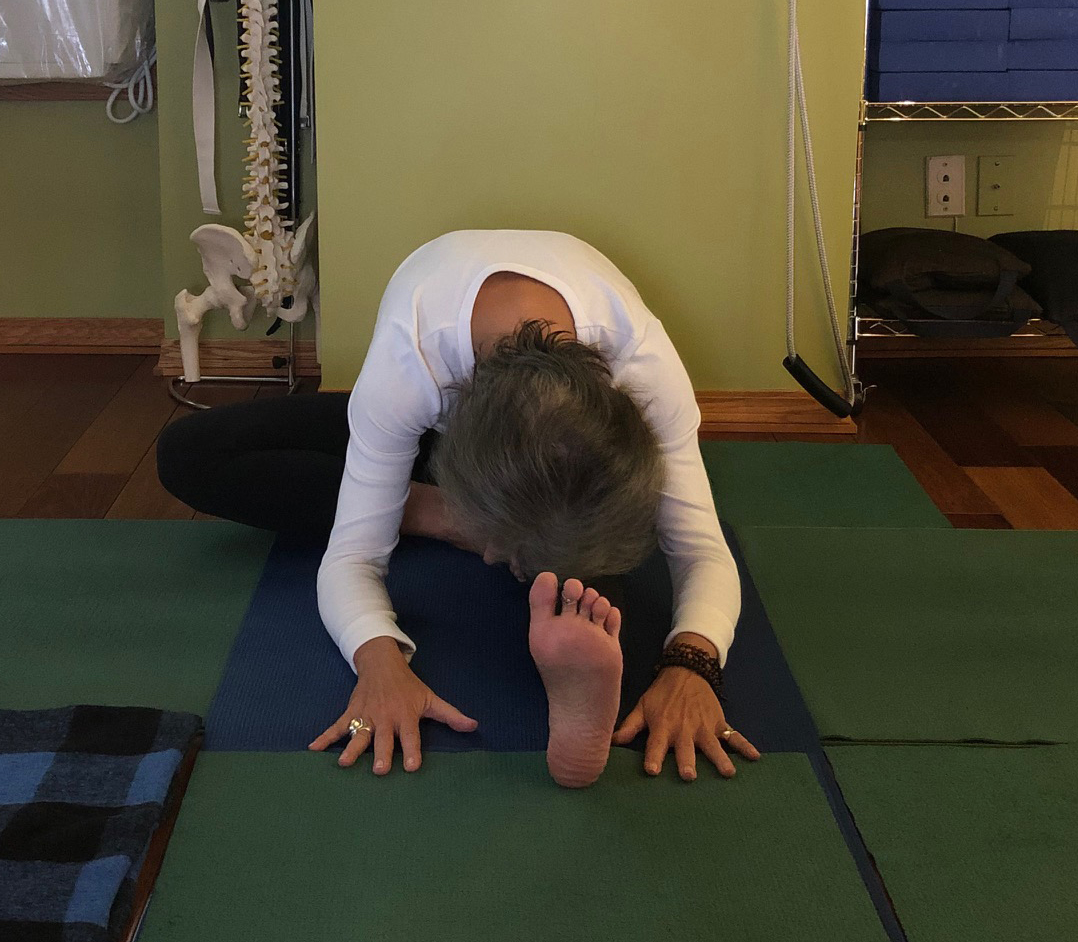
JANU SIRSASANA 1 minute each side
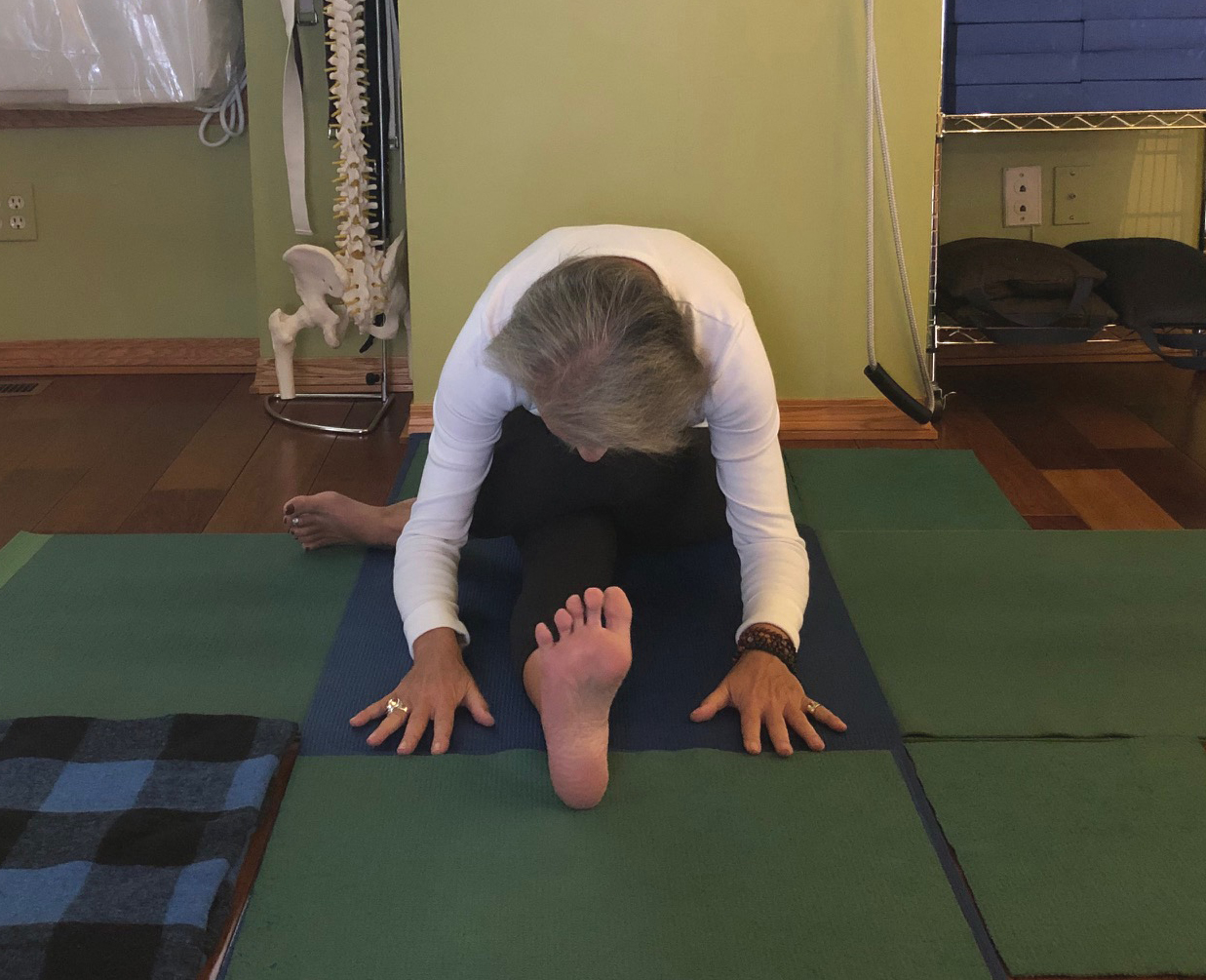
ARDHA GOMUKHASANA 1 minute each side
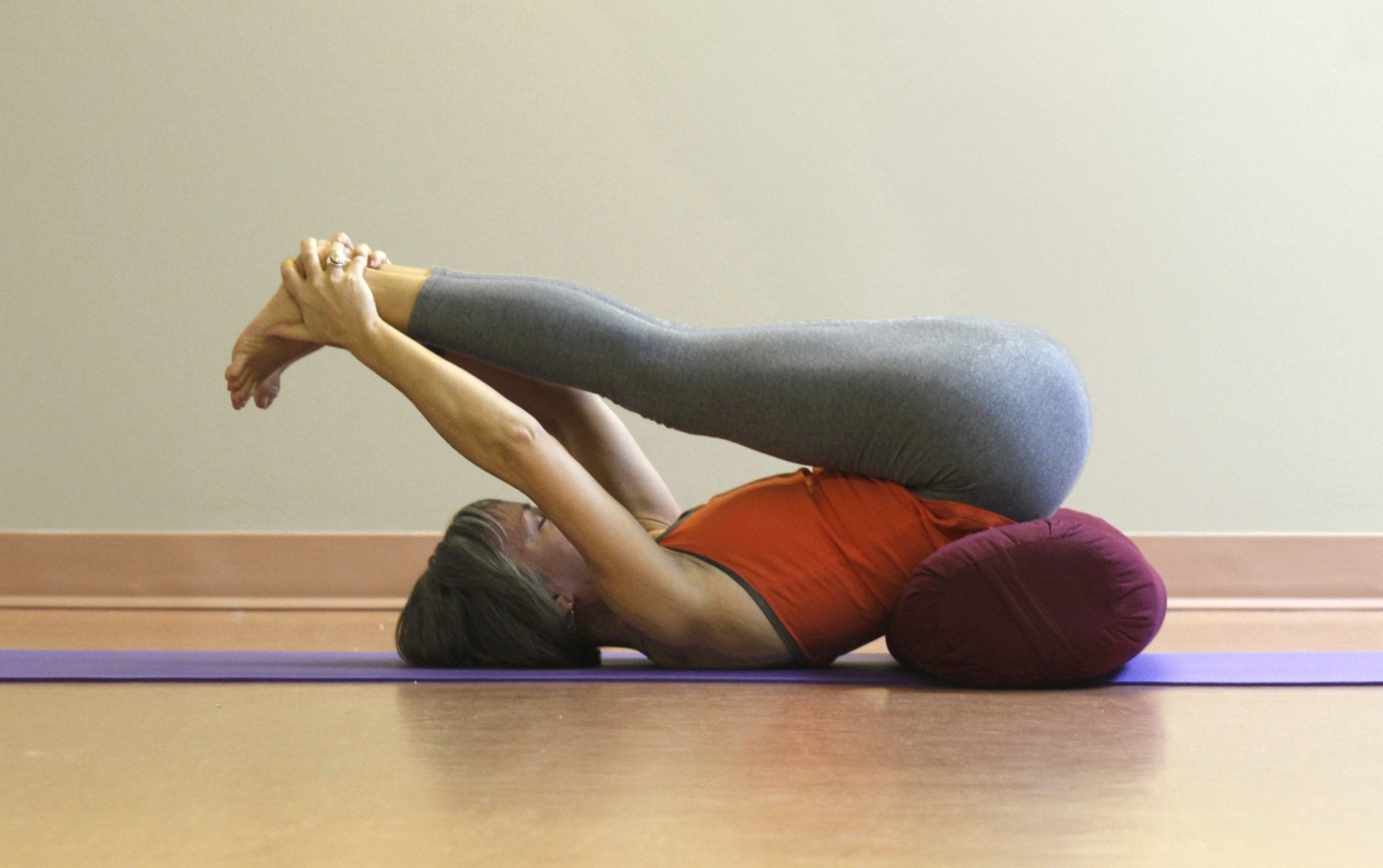
SALAMBA PASCHIMOTTANASANA 1 minute
– or choose your sattvic variation of Paschimottanasana

SAVASANA II: 5 minutes
- Soften the inside lining of your mouth. Notice how the tongue drops away from the roof of your mouth. PAUSE 1 minute
- Soften and expand (make porous), the skin of the soles of your feet. Notice how the back of the hips relax and release. PAUSE 1 minute
- Soften and expand (make porous), the skin of the palms of your hands. Notice how the shoulder blades move into alignment in the back body. PAUSE 1 minute
May you be the force of nature you are intended to be.

